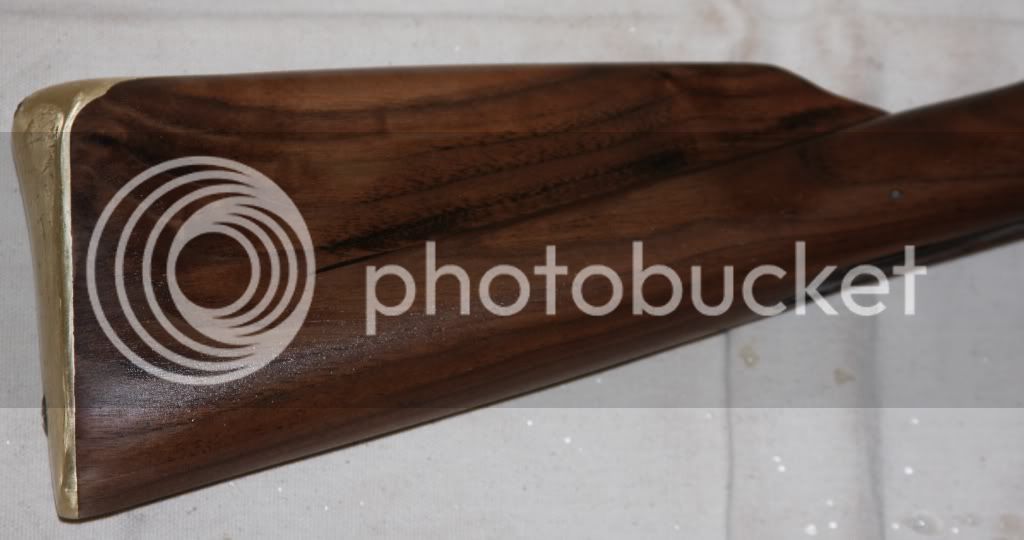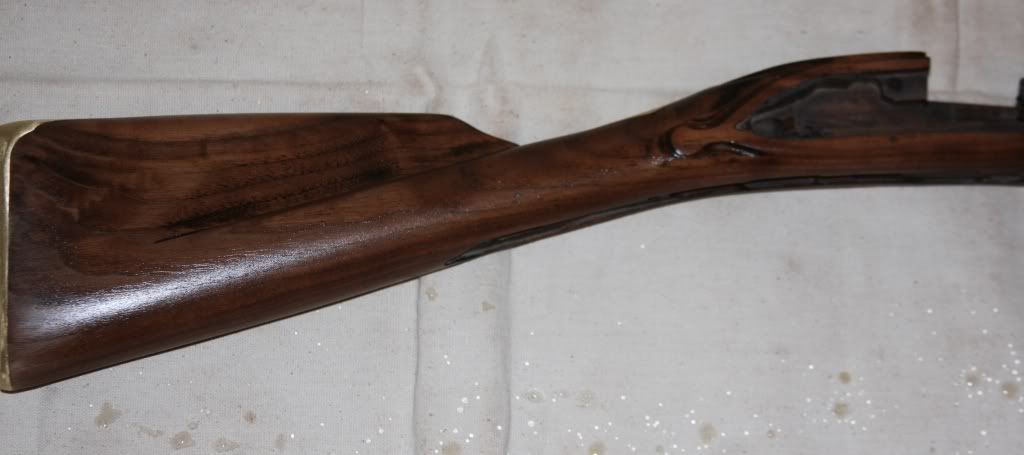Here's a few things I've picked up over the years. As the guys mentioned, always back up your sandpaper. I use a number of different sanding blocks. Some of the most handy are rubber pencil erasers. The block kind. I have a large white one and a couple of the smaller pink ones with the angled ends. Those things are handy beyond belief. Also you can improvise. Firm sponges, pencils, wood dowels, even tool handles can all be used when they fit a curve that needs sanded. The handiest things I've ever owned for sanding are "detail sanding curves" I picked up from Rockler woodworking (http://www.rockler.com/CategoryView.cfm?Cat_ID=104). They also have a tiny detail sander that's really handy for working your metal parts. It gets into the crevices of trigger guards, etc.
When you are sanding wood or metal and switch to a finer grade of paper, sanding across your previous sanding marks will remove them better, more smoothly, with less wood or metal removed. This is the one time that it's ok to sand across wood grain, because you're not trying to remove wood, only remove the marks from the previous grit. Go lightly, and dampen your wood with mineral spirits regularly and look closely to make sure you got out the marks from the previous grit. The mineral spirits helps highlight any marks that still need removed.
As for the metal, filing out the casting bumps is easy, but you have to file a little deeper to remove the pits. Just go slow and file evenly, so that you don't make any grooves in the metal that will be hard to sand out later. If you fill the teeth of the file with chalk, the file won't clog as easily and it'll last longer and make smoother cuts. Plain ol' school chalkboard chalk. When the file teeth do get full of filings, brush them out with an old pain brush or what have you.
When sanding, use a course grit just to remove the file marks, then switch to a finer grit to remove the marks from the previous grit, etc. Keep on going finer until the metal starts to clean up and look smooth and shiny. If you're going to brown the steel, I wouldn't go any finer than 320 grit. 240 is probably plenty. If you get it too smooth, it's hard to get it to brown evenly.








